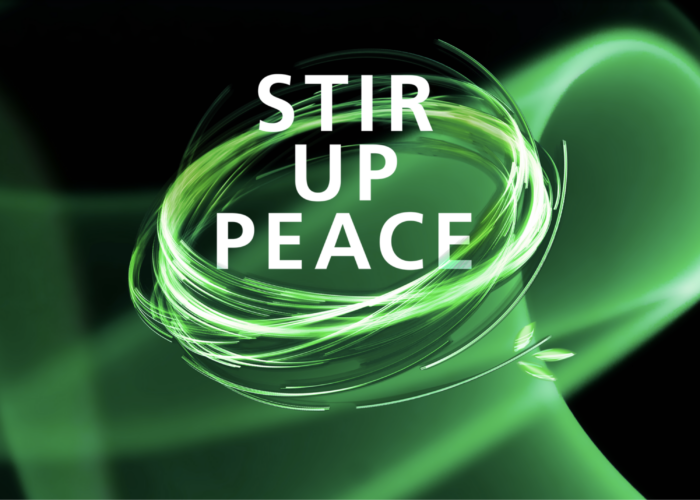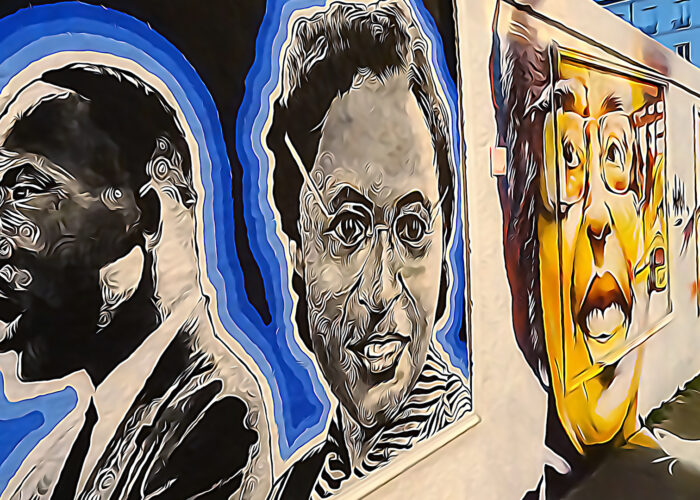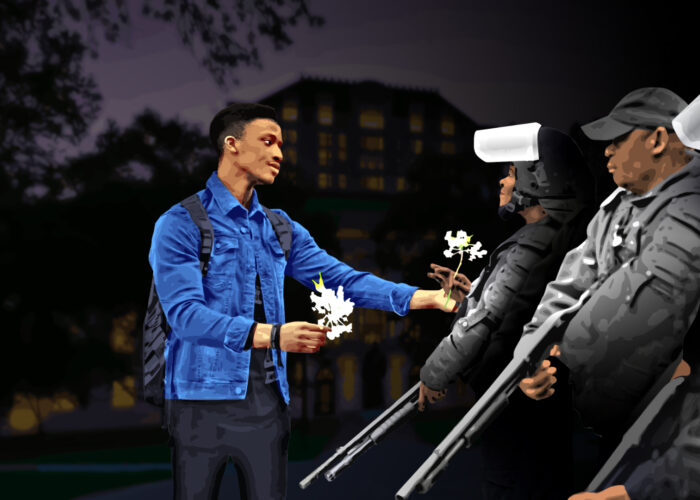Episode 3: Listening and analysis
Study guide
Focus statement/synopsis:
Historically, people with power have excluded, killed or harshly treated those who looked different, lived differently, prayed differently or organized their societies in different ways. Today in the United States, we live with governmental policies and corporate practices that reflect these biased power imbalances. This affects every part of our society, even our churches. Jesus spoke directly about exclusion and bias, modeling inclusion through his disciples and breaking down dividing walls.
Nonviolent direct actions may have a simple goal, but often, they are aimed at positively impacting deeper issues in our society. Understanding the cultural, political and economic dynamics at play — both in larger society and in your peace-seeking group — is crucial; otherwise the action could backfire.
Scripture:
Read John 4:1-30.
Opening ritual:
Practice the prayer of awareness. This is a spiritual discernment prayer, focused on listening, analysis and humility.
Group Discussion
Jesus’ emotions, thoughts and actions drove him to expand sacred space, advocating that marginalized people have direct access to God’s mercy and justice. He did this as God incarnated, in the form of an impoverished teacher from a small town, who was mobilizing other rural people and people experiencing poverty to challenge the urban religious and economic establishment. Without understanding Jesus’ divine origin story, people judged him as being powerless.
Often, we feel powerless, too. However, if you are watching these videos, you are likely in one of the most privileged situations (in terms of access to clean water, abundant food and information) that the world has ever seen. We must be honest about the fact that we are not powerless. It is okay to have access to various types of power, if we figure out how to use it in service of the peace and justice of God, which is a way of life that dismantles the systems that reproduce power inequality, oppression, violence and injustice.
Activity:
Print enough copies of the Social Location survey for everyone in the group to fill out.
Take the survey individually.
Jesus broke down divisions of all types, especially divisions created by societal inequality (Ephesians 2:13-22). Part of the effort needed to build a better world together is investigating how current institutions (media, advertising, schools, government, courts, military and churches) have invested in and perpetuated unequal power. Simply avoiding having a conversation about power does not make the power dynamics go away. We don’t necessarily need to outright reject these institutions — though some people will, and that is understandable. Regardless of which institutions we continue to participate in, we can examine every institution’s complicity in the reproduction of unequal power. Unequal power in an institution generates structural violence. Nonviolent direct action campaigns often aim to expose structural violence and offer solutions to reduce the violence caused by those institutions.
When we offer a strong analysis of how power operates within a group that is taking action, we can act with greater clarity. This reduces the potential of doing harm to other members of the group (people feeling left out, misunderstood or taken advantage of). The analysis of power dynamics in groups and society will never be complete. We will never have all the answers — and it’s better if we don’t! Nonviolent direct action takes place within the tension of humility and boldness. Together.
The more attentive we can become to these dynamics — both in our group and in society at large — the more our group will become aware of ways to support and protect one another, as we take risky action together.
Just as institutions are not neutral on issues of injustice, we don’t enter the struggle for justice as "neutral" people. Rather, we are people with specific histories, abilities and experiences that influence how we see the world and how the world responds to us. Our social location can affect our participation in nonviolent direct action events. Studying our social location brings awareness to how different members of our group are empowered or disempowered in society. This is not just about personality or personal power — it is about who society privileges.
Small group/partner discussion questions:
- Discuss the results in pairs.
- What thoughts and/or feelings came up for you as you filled out the survey?
- What further questions do you have?
Large group discussion questions:
- What information does the survey give us about our group?
- How can understanding social location help us during a nonviolent direct action event or in our analysis of the broader conflict situation?
- The following are some questions with some possible responses in italics that the facilitator can use to encourage discussion and summarize the topic before asking the next question.
- Who might our intended audience listen to and respect the most? Women might be seen as less threatening. Someone with good charisma might hold the audience’s attention. The camera may be directed to toward X type of people.
- What social categories might be heard less or be perceived in a certain way? People of color. People living with poverty. Children.
- Who in our group is the most characteristically vulnerable as we take this collective action? Who might have the most capital (social, financial, relational) to leverage? (If possible, defer to those with less power in the group to speak first about some of the latter questions.)
- How might we use what we know about our intended audience and/or the police to gently lead them to nonviolent direction action, while remaining mindful to protect one another and avoid exploitation?
Close in prayer.



